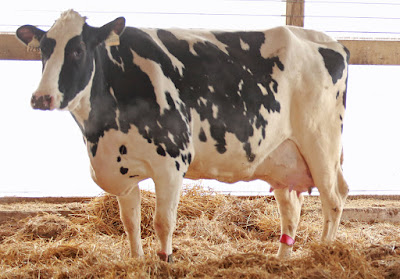What’s important in dry cow management?
- Maximizing dry matter intake through high-forage diets and high-quality feed ingredients.
- Properly balancing rations for dietary protein and energy along with vitamins and minerals for proper fetal development and transition success.
- Closely monitoring body condition to minimize the risk of transition disorders and better set the dry cow up for a smooth transition into the milking herd.
- Evaluating the dietary potassium and cation-anion difference (DCAD) levels to minimize the occurrence of milk fever at calving.
Common challenges:
- Dry matter intakes: Depending on the availability and quality of feedstuffs, dry matter intakes can potentially be a limiting factor in dry cow program success and should be accounted for within the delivered ration.
- Feedstuffs: Low availability of low-potassium feedstuffs can create a need for supplemental negative DCAD ingredients, which can significantly add to purchased feed costs.
- Protein levels: Inadequate metabolizable protein levels in dry cow diets can hinder transition cow success and may not fully account for the needs of the cow and fetal growth over the last few weeks of gestation.
- Overcrowding: Overcrowded pens and frequent re-grouping can lead to aggressive interactions and competition between cows. These situations can also negatively impact dry matter intake and time spent ruminating and is especially hard on subordinate cows that are driven away from the feed bunk by more dominant cows.
Tips for maximizing health and performance:
- Dry matter intakes: Consistent, high dry matter intakes help to optimize animal performance during the dry period and helps prepare the cow for the higher intakes she will need to achieve after calving.
- Body condition: Monitor body condition often to ensure that cows are maintaining and not gaining condition throughout the dry cow management period.
- Bedding: Bedding cleanliness is of great importance in the dry cow pen in order to minimize the risk of environmental mastitis at calving.
- Bed size: Adequate bed size or laying areas for dry cows are recommended for optimal cow comfort, as cows are generally at their heaviest weight and largest size during the dry period.
- Heat stress: Heat stress mitigation has been found to help the calf achieve target growth in utero and help the cow transition more easily to peak production after calving.
- Bunk and water space: Ensure that there is adequate bunk and water space to confirm that all animals, even subordinate cows, always have free access to the necessary nutrients.
Tags:
Dairy Farming

